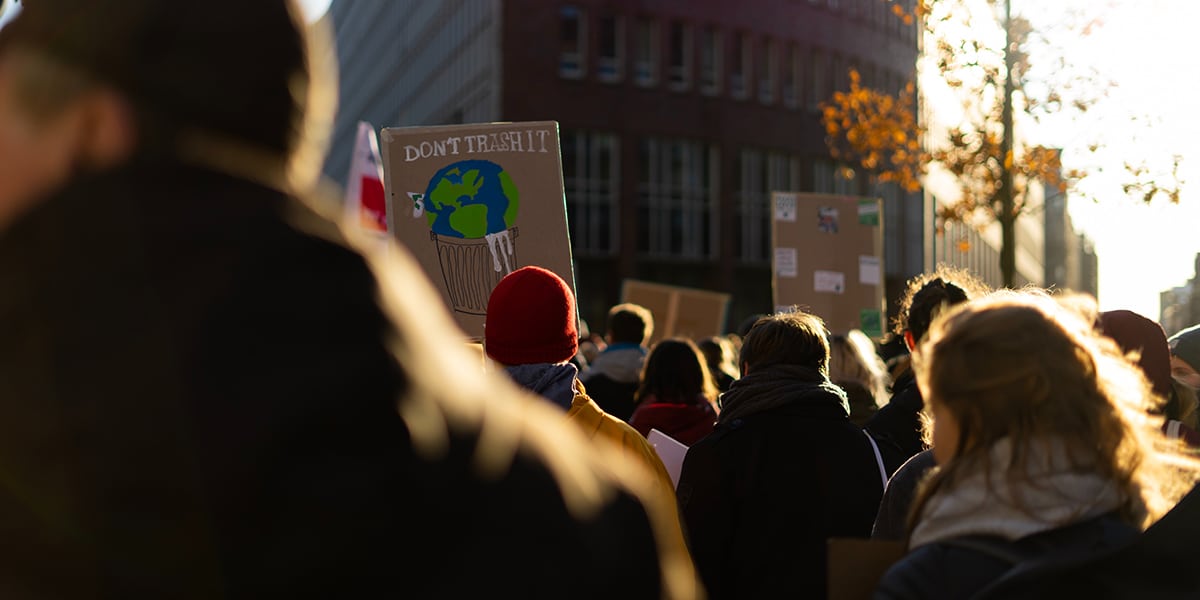The start of 2020 provides a natural opportunity to contemplate what the future holds as well as reflect on the shifts that occurred over the previous decade. From my vantage point overseeing marketing at 3Degrees, here are some of the most relevant trends for anyone who plays a role in communicating climate action.
An Intergenerational Audience
Climate change poses many intergenerational challenges. First, there is the question of the responsibility any generation has to those that follow it. The headline-grabbing news about brush fires in Australia, historic flooding, and record temperatures are a clear indication that our environmental legacy is at risk, and this is not to be taken lightly.
Another challenge is that we now have more generations coming together in the workplace as we confront these issues. For the first time in history, the workforce spans five generations, from the Silent Generation, in their 70s and 80s, to Generation Z, just entering their 20s. Alliances among generations – particularly on climate issues – are not necessarily easy. According to a 2018 Gallup analysis, there is a global warming age gap: 70% of adults age 18 to 34 worry about global warming compared to 56% of those 55 or older.1 This wide range in generational beliefs and concerns about the impacts seen in one’s lifetime can make for some pointed conflicts in the workplace, like in December when 25-year-old New Zealand lawmaker Chloe Swarbrick retorted with “OK, boomer” to her older colleagues during her speech in support of a climate change bill.
Shifting Perceptions and Expectations
Fortunately, there is some good news when it comes to transcending differing intergenerational perceptions and spurring climate action. While previous research found that younger adults were slightly less engaged than older adults on climate issues, this trend seems to be shifting, according to recent studies from the Yale Program on Climate Change Communications. In September 2019, the passion of the global youth climate strikes resulted in the largest single event for climate action – with adults in 185 countries rising to the demand of the young strikers to join them in solidarity. As they come of voting age and join the workforce, these passionate youth will continue to shape expectations about the need for urgent climate action.
The fact that 67% of Americans believe climate change is happening has impacted how organizations of all sizes are approaching their own plans. As many clients have shared with us, the era of viewing corporate sustainability efforts as a “nice-to-have” is over. No longer are companies tiptoeing around the topic of climate change. According to State of Green Business 2020, 90% of companies now report senior management level ownership of climate-related issues, up 45% for U.S. companies and 35% globally.2 The pressure is coming from their customer base, as well. For example, 59% of consumers now expect companies to take a stand on climate change (up from 39% in 2018).3 From our standpoint, we’ve seen clients not only take bold steps when it comes to climate commitments, but fully embrace sharing those actions in a very public manner — such as Etsy’s announcement around the launch of its carbon neutral shipping initiative.
This next decade will shape the kind of world future generations will inherit. While some of the shifts discussed here will help, we need to hone our skills at how to effectively galvanize climate action. Now, more than ever, we must communicate the urgency of the situation and motivate clients, colleagues, family, friends, and government leaders to take climate action. Will you join me?


